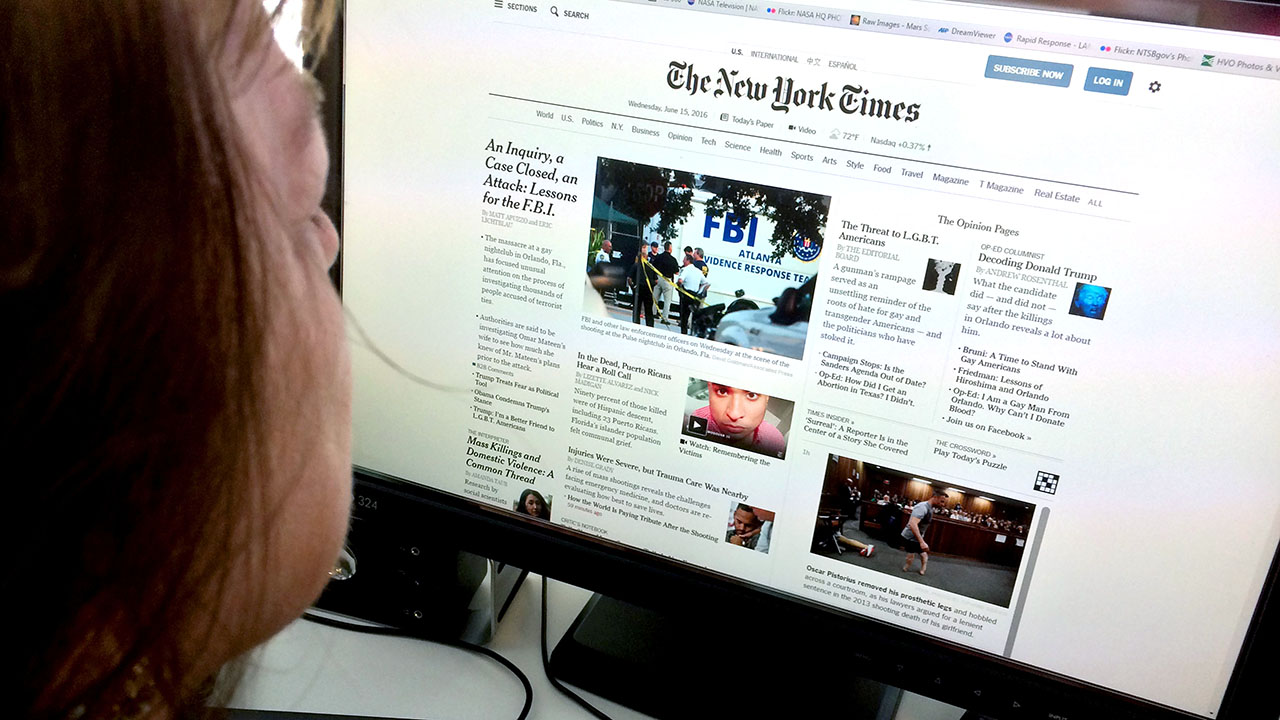Comprehensive World News Insurance Coverage with DW News Daily
Comprehensive World News Insurance Coverage with DW News Daily
Blog Article
The Advancement of Journalism in the Age of News Online
In the swiftly altering landscape of journalism, the electronic age has introduced a new period where the immediacy of on the internet information reshapes both its production and usage. As electronic platforms multiply, they enhance interactivity and widen the reach of journalism, yet concurrently test conventional norms with the quick spread of details and misinformation alike. The surge of citizen journalists and independent voices better complicates the story, adding to a dynamic yet perilous media ecosystem. As we browse these intricacies, one should ask yourself about the future of journalistic stability and just how it can be safeguarded in the middle of these transformative adjustments.

Surge of Digital News Operatings Systems
The rise of digital information platforms has basically transformed the landscape of journalism, marking a change from traditional print media to dynamic, on-line spaces. This development was thrust by improvements in technology and the enhancing access of the internet, which enabled information to be shared rapidly and extensively. Unlike their print equivalents, electronic platforms can quickly upgrade web content, providing real-time news protection and evaluation that interest the modern visitor's demand for immediacy and significance.
Digital systems have actually additionally expanded the scope of journalism, allowing a diversification of voices and viewpoints. With reduced obstacles to entry, independent journalists and smaller wire service can reach global audiences, challenging the monopoly once held by established media conglomerates. This democratization of news has actually improved the general public discussion, supplying differed stories and providing to niche interests that were previously underserved.
Additionally, the combination of multimedia aspects such as video clip, audio, and interactive graphics improves storytelling, making news more available and interesting (dw news). This multimedia come close to not just draws in a wider audience but also help in the comprehension of intricate tales. Fundamentally, electronic platforms have redefined journalism, fostering advancement and flexibility in an ever-evolving media setting

Influence of Social Media
Social network systems have actually further transformed journalism by modifying how news is consumed and shared. These platforms have democratized information circulation, enabling anyone with web access to report events in real-time. This immediacy has placed traditional information electrical outlets in a race to maintain, engaging them to embrace quicker reporting techniques. Furthermore, social media has expanded target markets, approving journalists access to global viewership past geographical restraints.

The interactive nature of social media sites promotes interaction, allowing target markets to get involved in conversations, share opinions, and contribute to information stories. This interaction improves the dynamic in between journalists and their target markets, advertising a more participatory type of journalism. However, this likewise places tremendous stress on journalists to produce web content that resonates with audiences, commonly focusing on sensationalism to catch attention.
Moreover, social media platforms have become important devices for reporters to source stories, evaluate popular opinion, and network with market peers. By keeping an eye on trending subjects and user-generated web content, reporters can uncover stories that may otherwise be forgotten. Yet, the dependence on social media sites likewise requires an essential assessment of sources to make sure the credibility of information shared. In this progressing landscape, flexibility remains crucial for journalists to grow.
Challenges of Misinformation
Among the digital revolution of journalism, one substantial difficulty is the pervasive spread of false information. In an era where details is abundant and rapidly accessible, identifying in between credible information and made web content has actually ended up being progressively tough. The sheer volume of information shared throughout different on the internet platforms frequently blurs the line in between reality and fiction, presenting a considerable danger to the integrity of journalism.
False information can spread out rapidly through social media sites, where formulas prioritize engagement over precision, unintentionally enhancing false stories (dw news). This not only undermines public rely on media establishments however likewise fosters a setting where misleading content can affect public viewpoint and decision-making processes. The obstacle for journalists is twofold: to debunk frauds effectively and to copyright strenuous requirements of fact-checking and verification
More complicating this problem is the presence of deepfakes and innovative disinformation campaigns that leverage progressed innovations to create deceptive material indistinguishable from legit reporting. As these technologies advance, so should the techniques and devices used by journalists to battle them. Dealing with false information needs collaboration between media organizations, modern technology business, and policymakers to develop detailed strategies that secure the authenticity of details in the digital age.
Duty of Citizen Reporters
Navigating the landscape of misinformation highlights the transformative impact of citizen reporters within the electronic world. As typical media electrical outlets come to grips with the large rate and volume of information circulation online, resident reporters-- ordinary individuals equipped with smart devices and accessibility to social media-- are playing an increasingly critical duty. These grassroots contributors have ended up being crucial in covering events swiftly, commonly giving real-time updates from the ground prior to mainstream media can respond.
Citizen reporters have actually equalized information reporting, enhancing voices that might otherwise continue to be unheard. By leveraging platforms like Twitter, Facebook, and Instagram, they supply varied point of views that challenge the narratives frequently pushed by developed media.
However, resident journalism is reshaping the media landscape, compelling traditional electrical outlets to adjust by incorporating user-generated material into their reporting. By cultivating neighborhood interaction and encouraging participatory journalism, these digital authors add to a much more inclusive and vibrant information environment. As resident journalists continue to advance, their duty in forming public discussion continues to be an important element of contemporary journalism.

Future of Journalistic Honesty
The expansion of digital systems has actually democratized information circulation, making it possible for a bigger variety of voices to add to the news landscape. This has actually likewise led to the spread of misinformation and the disintegration of depend on in media.
The rise of expert system and algorithm-driven web click here now content curation additionally complicates the landscape. While AI can enhance coverage by examining large datasets and recognizing fads, it likewise positions risks of predisposition and adjustment. Journalists have to as a result stay vigilant, making sure that technology acts as a tool for fact instead of distortion.
Additionally, the monetary pressures on typical media electrical outlets require innovative organization designs to sustain top quality journalism. Subscription-based versions, nonprofit funding, and collaborations with tech companies are arising as potential remedies. Yet, they need to be pursued without endangering editorial freedom.
Eventually, the future of journalistic honesty depends upon the dedication of media and journalists organizations to copyright transparency, liability, and a steadfast commitment to reality, amidst a swiftly changing electronic world.
Final Thought
The advancement of journalism in the digital age provides both obstacles and opportunities. The rise of digital news platforms and social media has actually equalized details dissemination, empowering a diverse range of voices, including resident journalists.
The increase of digital information systems has actually basically transformed the landscape of journalism, Find Out More marking a shift from conventional print media to dynamic, on-line rooms. With reduced obstacles to access, independent reporters and smaller sized news organizations can reach worldwide target markets, testing the syndicate as soon as held by established media conglomerates.Social media platforms have even go to my site more reinvented journalism by altering how information is taken in and shared. As standard media electrical outlets grapple with the sheer speed and volume of news dissemination online, person journalists-- common people equipped with smart devices and accessibility to social media-- are playing a significantly crucial duty. The increase of digital news systems and social media has actually equalized info dissemination, equipping a varied range of voices, including resident journalists.
Report this page